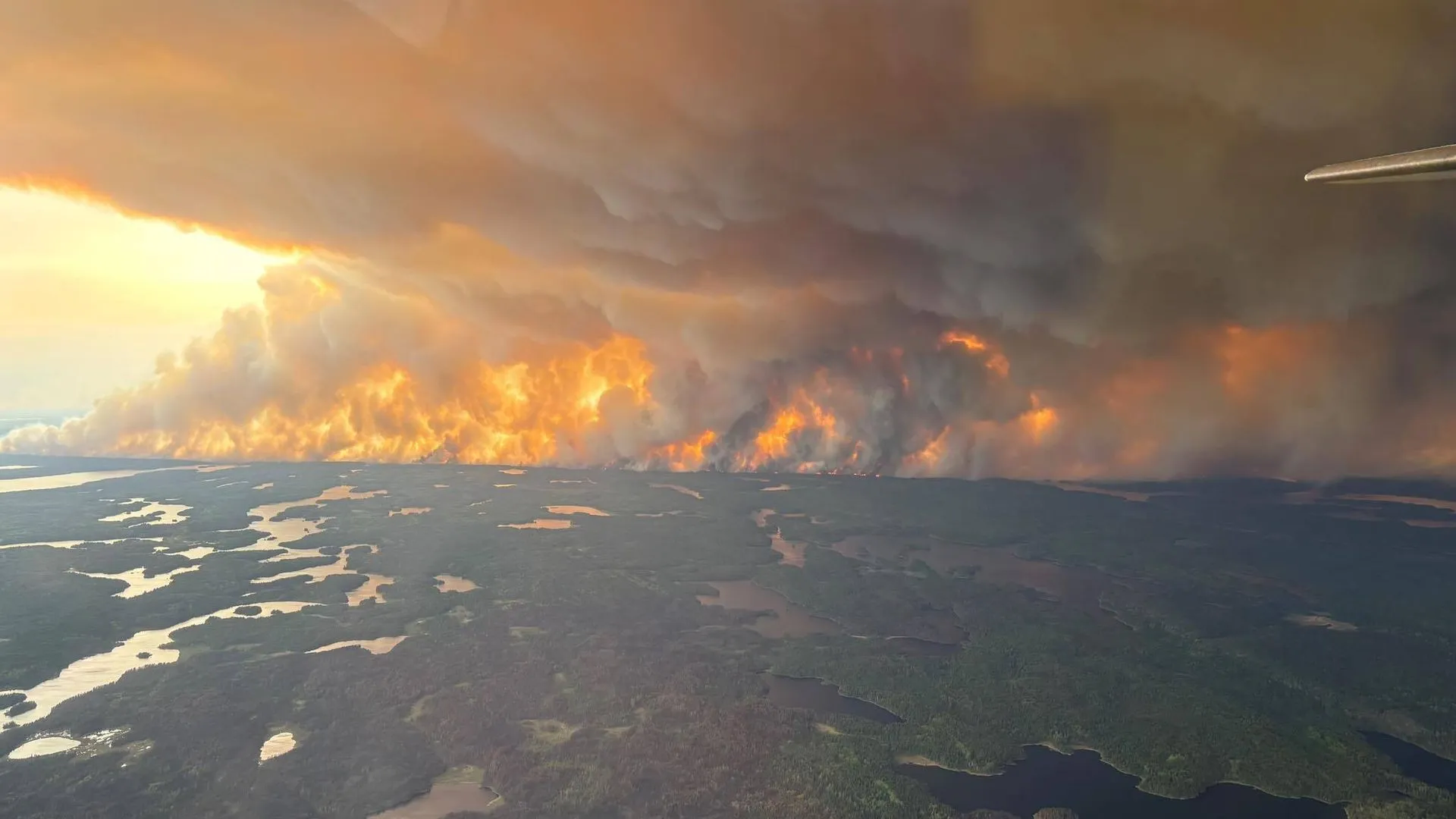Introduction
The summer of 2023 has seen devastating wildfires sweeping across Canada, unleashing plumes of smoke that have traveled thousands of miles, even affecting air quality in parts of the United States. As skies darken and health warnings escalate, the narrative surrounding these fires is becoming increasingly complex. While some states are quick to point fingers at their northern neighbors, Canada is not ready to play the blame game. This article explores the current situation of Canada’s wildfires, the implications of smoke drifting into the United States, and the broader realities of dealing with natural disasters.
The Current State of Canadian Wildfires
Canada is no stranger to wildfires. With vast forests and changing climatic conditions, the nation faces an uphill battle regarding forest management and fire safety. This year, a combination of high temperatures, prolonged drought conditions, and lightning strikes have led to unprecedented fire activity, particularly in British Columbia and Alberta.
Wildfires have burned over 15 million hectares of land this year alone, a staggering increase from the annual average. Many regions are not equipped to handle such extensive damage, and resources are strained as firefighters battle multiple blazes. Residents are being evacuated, wildlife is being displaced, and communities face an uncertain future.
Smoke Travels Down South
The smoke emitted from these wildfires is not confined by borders. Smoke clouds have drifted south, affecting air quality in parts of the Midwest and Northeast United States. This phenomenon has led to a public health crisis, as air-quality levels have plummeted. In cities like Minneapolis and New York, residents are being urged to stay indoors, resulting in canceled outdoor events and rising anxiety about respiratory health.
Despite the clear effects of the smoke, officials in Canada have pushed back against accusations from some U.S. states that blame them for the deteriorating air quality. “We are not here to take responsibility for something that is a natural phenomenon, exacerbated by climate change,” said a spokesperson from Canada’s Ministry of the Environment.
The Blame Game: Who’s Responsible?
The debate over responsibility highlights larger issues of governance and environmental stewardship. Critics maintain that increased logging and insufficient fire management contribute to more severe wildfire seasons. Some U.S. states have pointed fingers at Canada’s forestry practices, fueling the blame game.
However, scientists clarify that wildfires are a natural part of the ecosystem. Climate change is altering weather patterns and increasing the frequency and intensity of wildfires across the globe. It may seem easy to assign blame, but doing so oversimplifies a complex issue that is influenced by multiple factors.
Reader’s View: Wildfire Article Actually Wasn’t Satire
Local readers have expressed bewilderment at some of the mainstream media’s dismissive tone regarding the seriousness of the situation. In one case, an opinion piece was mistaken for satire when it described the dangers of wildfires and the suffocating smoke plaguing cities.
This misinterpretation highlights a growing disconnect between public awareness and the stark realities faced by those living near the fires. One reader wrote, “For those of us who have been forced to leave our homes, this isn’t a joke. We need people to understand just how serious these wildfires are and what we are dealing with on a daily basis.”
Natural Disasters and Climate Change: A Looming Reality
Wildfires, hurricanes, floods, and heatwaves are all symptoms of a changing climate. As the earth warms, the likelihood of these natural disasters increases. Canada’s wildfires are not an isolated incident but rather part of a global pattern of climatic disruption. In the U.S., states like California have also experienced wildfires at alarming rates, leading to discussions about sustainability, environmental policy, and disaster response.
The Canadian government has pledged to allocate more resources toward fire management and prevention in the wake of this crisis. However, critics argue that it is not enough. “Addressing climate change requires a collaborative effort across borders,” argues environmental advocate Sarah Thompson, emphasizing the need for both Canada and the U.S. to develop comprehensive climate initiatives.
Conversations Around Policy and Accountability
Dialogue surrounding accountability extends to policymakers who are navigating an unprecedented climate landscape. What steps should governments take to mitigate further risks associated with natural disasters like wildfires? Calls for investment in climate-resilient infrastructure, reforestation projects, and community awareness programs are becoming increasingly prevalent.
In Canada, there has been a push for reforms that would increase the capacity of emergency services and provide better training for forest management. Similarly, U.S. lawmakers are being called upon to reassess policies related to land management and emergency preparedness.
Community Resilience: A Human-Centered Approach
Amid the smoke and chaos, stories of resilience emerge. Communities affected by wildfires show incredible strength in the face of adversity. Neighbors band together to help those displaced by the fires, and grassroots organizations are stepping up to provide services to affected families.
Individuals have taken to social media to connect with others facing similar hardships, sharing resources and emotional support. After all, at the heart of the natural disaster narrative are the stories of those directly impacted—human lives intertwined with the environment.
Conclusion: Looking Ahead
As we navigate these tumultuous times marked by climate change and natural disasters, it is essential to prioritize education and community engagement. We must move away from the blame game and toward collaborative efforts that acknowledge the complexity of wildfires and other environmental challenges.
In closing, Canada’s wildfires serve as a stark reminder of the realities of climate change and the urgent need for a united front to address these escalating issues. Whether through advocacy, policy reform, or community support, each action taken can contribute to a more sustainable future—not just for Canada, but for all nations grappling with the consequences of our planet’s changing climate.







